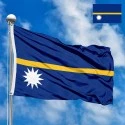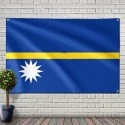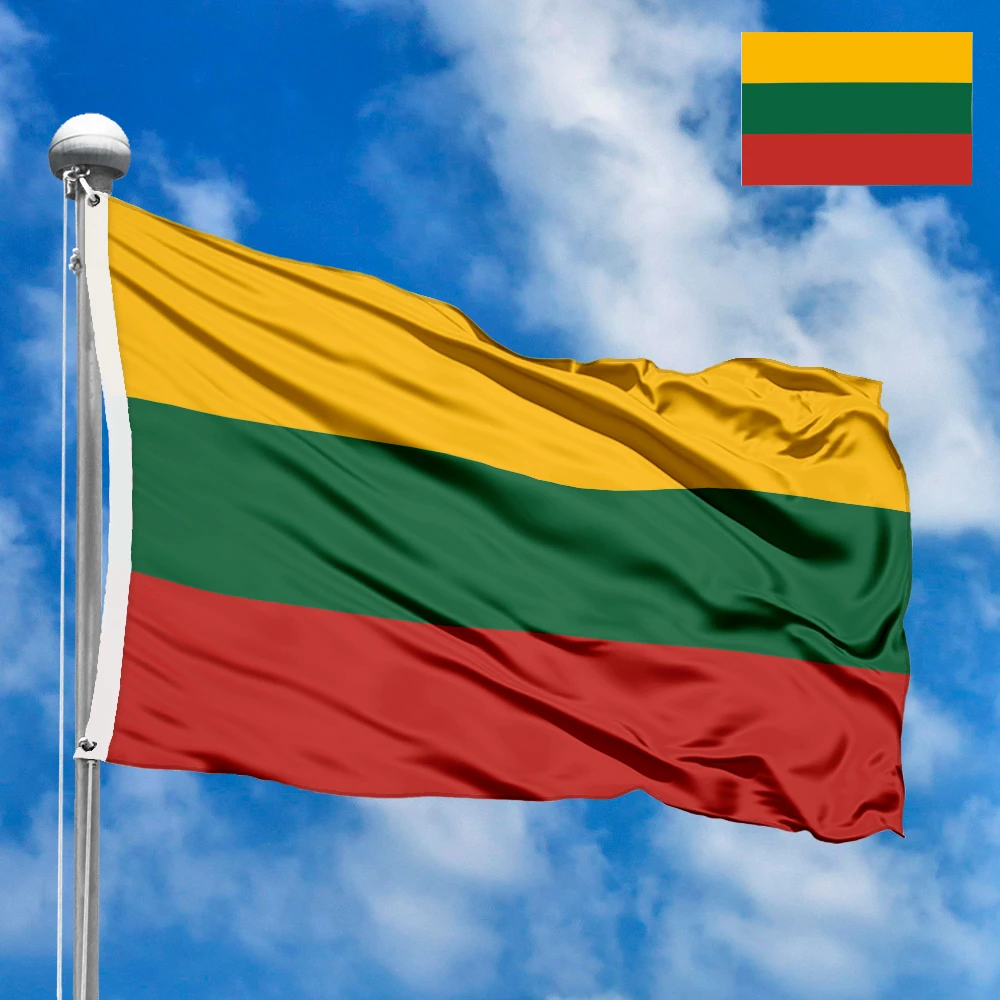The flag of Nauru is a symbol of a nation's unique geography, its journey to independence, and the elements that define its history and identity. Adopted on January 31, 1968, the day the island nation gained independence, the flag's design is both simple and profoundly meaningful, telling a story of location, heritage, and the promise of a future.
Design and Symbolism
The flag features a deep blue field with a narrow yellow horizontal stripe running across the center. Just below the stripe, on the hoist side, is a 12-pointed white star.
-
The Blue Field: The deep blue color that dominates the flag represents the vast expanse of the Pacific Ocean, which completely surrounds this small island nation. It symbolizes the sea and sky, which are fundamental to the Nauruan way of life and its identity as an isolated island in the Micronesian region.
-
The Yellow Stripe: The thin yellow stripe running horizontally through the middle of the flag represents the equator. Nauru is situated geographically just one degree south of the equator, and this stripe visually marks the island's location relative to this important global line. It also symbolizes the nation's path to independence, a bright line of progress and hope.
-
The 12-Pointed White Star: The prominent star on the flag represents the island of Nauru itself. The 12 points of the star stand for the 12 indigenous tribes that call Nauru home, symbolizing the unity and strength of the Nauruan people. The white color of the star is a powerful tribute to the island's historical source of wealth: phosphate. Known as "white gold," this resource was a cornerstone of the nation’s economy, and its color on the flag is a reminder of this rich past.
History and Adoption
Before 1968, Nauru was a Trust Territory administered by Australia, New Zealand, and the United Kingdom. As the country moved towards full independence, a new national flag was needed to represent its sovereign status. A nationwide design competition was held, and the winning entry was submitted by an indigenous Nauruan citizen. The design was chosen for its clear and symbolic representation of the nation’s geography and heritage.
The flag was officially adopted and first raised on January 31, 1968, during the independence day celebrations. It was an incredibly significant moment for the Nauruan people, as the flag marked their emergence as an independent nation on the world stage.
Flag Size and Proportions
The official ratio of the flag of Nauru is 1:2 (width to length). The yellow horizontal stripe is one-twelfth of the flag's width and runs exactly through the center. The 12-pointed white star is positioned below the stripe, with its center at a distance of one-twelfth of the flag's length from the hoist, ensuring its prominent and balanced placement.
The Country, Region, and Meaning for Residents
Nauru is an isolated oval-shaped coral island in the Pacific Ocean. As one of the world's smallest nations, it is an independent republic within the Micronesian region. Its history is closely linked to its phosphate deposits, which were extensively mined for decades, shaping the island's landscape and its economic trajectory.
For the people of Nauru, the flag is a powerful and cherished symbol of their identity. The blue field reminds them of their home, surrounded by the vast ocean that sustains them. The yellow stripe and the star are a visual representation of their place in the world, with the star specifically honoring the unity of the 12 tribes. The white color of the star is not just about historical wealth; it represents the light and hope for the future, standing as a testament to their resilience as a nation.
Interesting Facts
-
The flag was designed to be easily recognizable and to symbolize Nauru's specific geographical location relative to the equator.
-
The 12 points of the star represent the 12 original tribes of Nauru, a symbol of national unity.
-
The color white on the flag pays homage to the phosphate, or "white gold," which played a huge role in the country's economic history.
The flag of Nauru is a beautiful and meaningful emblem, a testament to its unique position in the world and the enduring spirit of its people.
In the demonstration images, full-size flags are shown with proportions of 2:3, and hand-held flags with proportions of 1:2.







 Waving flag
Waving flag
 Sizes:
Sizes:
 Round flag
Round flag
 Sizes:
Sizes:
 Rectangular flag 2:3
Rectangular flag 2:3
 Sizes:
Sizes: